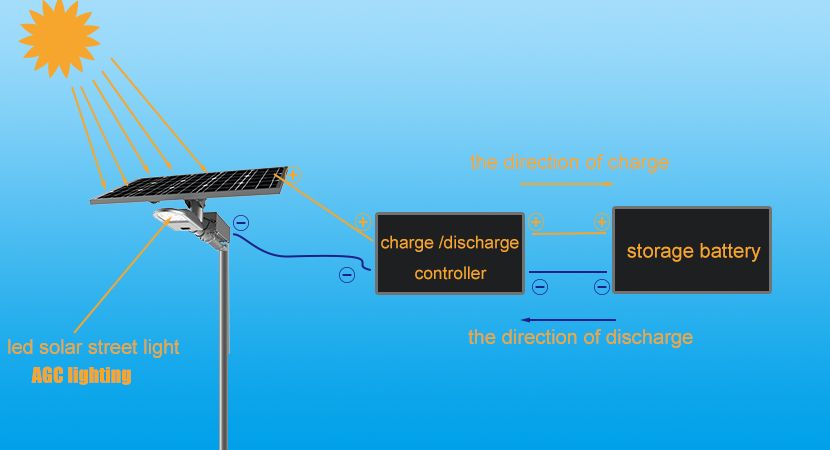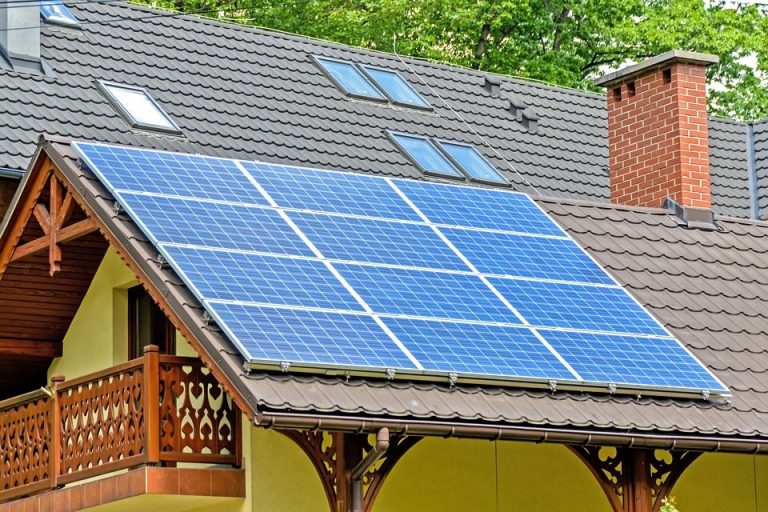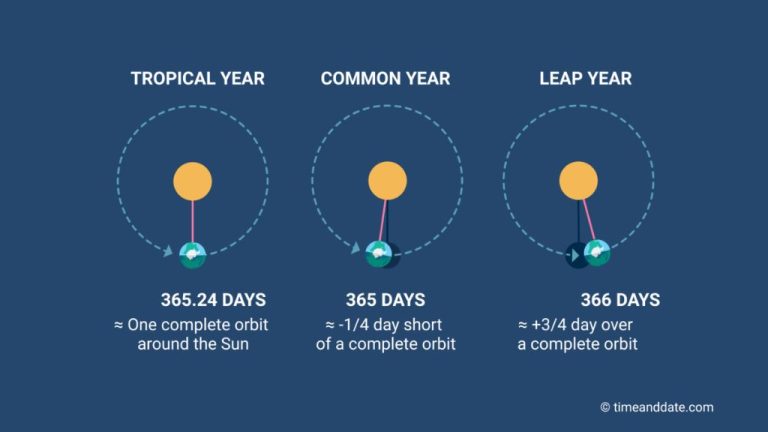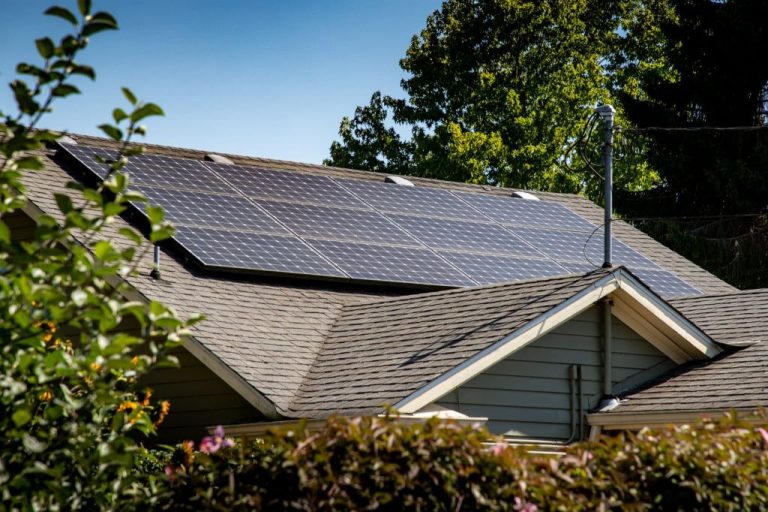Do Solar-Powered Street Lights Exist?
Solar-powered street lights are outdoor lights that rely solely on energy from the sun to operate. Unlike traditional street lights that are powered by connections to electrical grids, solar street lights are completely self-contained systems.
Solar street lights work by converting sunlight into electricity during the daytime, which is then stored in onboard batteries. At night, the stored energy powers LED bulbs to illuminate streets, parking lots, pathways and other outdoor areas.
The key components of a solar street light include solar panels, batteries, LED lamps and smart controls. Solar panels capture sunlight and convert it into DC power, which charges the batteries for nighttime operation. LED bulbs provide bright, energy efficient illumination. Smart controllers regulate the energy flow and turn the lights on and off at the appropriate times.
Solar street lights offer many benefits compared to conventional street lighting powered by the electrical grid. They are self-sustaining systems that do not require cabling or wiring to the electrical grid. Solar lights can be installed anywhere that receives sunlight, making them highly versatile. They also help reduce energy consumption and costs, as well as carbon emissions. Solar lights require less maintenance since they have fewer components that can break down. Overall, solar-powered lights provide a sustainable, cost-effective lighting solution for outdoor public areas.
History of Solar Street Lights
The concept of using solar energy to power street lighting has been around for decades, but the technology only really became viable in the 1990s. Some of the earliest implementations of solar street lights occurred in the developing world, where extending traditional electric grids proved challenging and expensive. Countries like India, Kenya and Morocco began installing standalone solar street lights in rural areas in the 1990s and early 2000s.
In the developed world, solar street lights began being piloted in the late 1990s and early 2000s as well. For example, the city of Santa Monica, California installed 24 solar-powered LED street lights along the city’s Third Street Promenade in 1998. Germany and Japan also started testing and installing solar street lighting around this time.
Since those early days, the technology underpinning solar street lights has improved considerably. The efficiency of photovoltaic solar panels has increased, LED bulb lifespans and brightness have improved dramatically, and battery storage capacity has grown exponentially. As a result, over the past two decades solar street lights have become a viable and attractive option for many municipalities, businesses and organizations.
How Solar Street Lights Work
Solar street lights operate using a few key components that work together to collect solar energy during the day and illuminate roadways at night.

First, solar panels containing photovoltaic cells convert sunlight into electricity during the daytime hours. The photovoltaic effect causes electrons in the panels to become energized by the solar photons, creating an electrical current. The solar panels are designed to maximize exposure to sunlight throughout the day to generate the maximum amount of electricity.
Second, batteries store the electricity produced by the solar panels during the daytime. They allow the energy to be used at night when sunlight is not available. The batteries continue to provide electricity to illuminate the street lights after the sun has set.
Third, LED (light-emitting diode) lighting components are used to illuminate the street. LEDs require less electricity than traditional incandescent or fluorescent bulbs, making them ideal for solar power systems. The LED lights are bright and long-lasting.
Together, these components work to harness sunlight during the day, store energy in batteries, and power LED lights to illuminate roadways at night – all without being connected to the electrical grid.
Components
Solar-powered street lights are comprised of four main components that work together to collect, store, and utilize solar energy:
Solar photovoltaic panels – These panels contain photovoltaic cells made from semiconducting materials like silicon that directly convert sunlight into electricity via the photovoltaic effect. The panels are mounted on top of the light pole to maximize sun exposure.
Batteries – Rechargeable batteries like lead-acid or lithium-ion are used to store the electricity generated by the solar panels during the day. This stored energy can then power the light at night or on cloudy days.
LED luminaire – An LED lamp specifically designed for street lighting serves as the light source. LEDs are energy efficient and long-lasting.
Light pole/fixture – The pole and fixture physically support and house the solar panel, batteries, and LED luminaire. The height and design varies based on lighting needs.
Advantages
Solar powered street lights provide numerous benefits and advantages compared to traditional street lights. Some of the key advantages include:
Reduce Electricity Costs
Because solar street lights operate off solar energy from the sun, they eliminate the need to connect to the electrical grid. This removes the monthly costs of electricity to power the lights. Solar street lights are more cost effective to operate over the long term.
Lower Carbon Footprint
Since they don’t rely on electricity, solar street lights have no carbon emissions. This makes them an environmentally friendly lighting solution that helps reduce a city’s overall carbon footprint.
Require Less Maintenance
Solar lights have fewer mechanical and electrical components that require maintenance and repairs than traditional street lights. This reduces the overall maintenance costs and labor.
Resilient in Power Outages
During power outages from storms or other grid disruptions, solar street lights can continue operating normally. This makes them a highly resilient lighting solution.
Disadvantages
While solar-powered street lights offer many benefits, they do come with some drawbacks compared to conventional street lighting options. The main disadvantages of solar street lights include:
Higher upfront costs – The initial purchase and installation costs of solar street lights are typically higher than conventional street lamps. The solar panels, batteries, and LED fixtures add to the overall system costs. However, solar lights pay for themselves over time with virtually zero energy costs.
Dependent on sunny weather – Solar panels need direct sunlight to effectively recharge the batteries that power the LED lights. Cloudy, rainy weather can temporarily reduce the illumination. Solar street lights are best suited for sunnier regions.
Limited brightness – Although LED technology has improved substantially, the brightness and lighting power levels of solar street lights are generally lower than conventional counterparts. The solar-charged batteries can only produce so much energy.
Costs of Solar Street Lights
The upfront costs of installing solar street lights are typically higher than traditional street lights powered by the electrical grid. However, solar lights offer significant long-term cost savings from reduced energy bills and minimal maintenance needs after installation.
There are several factors that affect the overall costs of solar street lights:
-
Purchase price – The solar panels, batteries, LED lights, and control systems add to initial purchase and installation costs compared to basic grid-powered lights.
-
System size and specifications – Larger solar systems with brighter lights and more battery storage capacity cost more upfront.
-
Installation requirements – Simple pole mounting has lower labor costs than customized installations.
-
Energy rates – Areas with high electricity costs realize larger long-term savings from solar lights.
-
Government incentives – Tax credits, rebates, and solar initiatives can offset some upfront costs.
-
Location – Solar potential varies by region. Areas with more sun exposure require smaller solar systems for the same brightness.
Over a 20-30 year lifespan, most solar street lights offer a net cost benefit of 40-80% compared to grid-powered options, recovering the higher initial investment through electricity bill savings and reduced maintenance.
Implementation
Installing solar street lights requires some careful planning and consideration. Here are some of the main factors to think about:
Site Survey
Before installing solar street lights, it’s important to survey the site to understand the amount of usable sunlight available. Consider potential shading from buildings, trees etc. that could impact the solar panels. Measure the area to determine spacing and positioning of the lights.
Mounting
Solar street lights need to be mounted on poles or walls at an optimal angle to maximize solar exposure. The height and angle may depend on the width of the road or area to illuminate. Proper installation is key.
Wiring
Solar street lights require wiring to connect the solar panels to the batteries and light fixtures. The wiring size and type depends on the system wattage. Running underground wiring can increase costs.
Permits and Regulations
Check with local authorities on any permits, codes or regulations for installing solar lights. Public lighting often has specific requirements.
Maintenance
While solar lights are low maintenance, some periodic upkeep is required. Solar panels may need occasional cleaning. Batteries may need replacement every 2-4 years. Fixtures and wiring should be inspected for damage. Technology improvements may warrant upgrades over time.
With proper installation and maintenance, solar street lights can provide years of reliable, sustainable illumination.
Case Studies
Solar-powered street lights have been successfully implemented in many cities and towns around the world. Here are some examples:
Gandhinagar, India
The city of Gandhinagar in the state of Gujarat, India installed over 5,000 solar-powered LED street lights in 2011. The project cost around $7 million but has provided the city with major savings on energy and maintenance costs. The solar lights have reduced electricity consumption by over 60%.
Buffalo City, South Africa
Buffalo City Metropolitan Municipality installed over 1,500 solar street lights across the city from 2013-2015. The $5 million project was funded by the national government. The solar lights have reduced energy costs by 50% compared to conventional grid electricity.
Hull, England
The city of Hull installed 800 solar-powered LED street lights in 2013 with funding from the European Union. The city has seen a reduction in energy consumption of up to 75%. They’ve also experienced savings on maintenance costs since the LED lights last longer than traditional lights.
These case studies demonstrate that solar street lights can provide significant cost savings and environmental benefits for cities. The upfront installation costs can be quickly recouped through lower electricity and maintenance bills over time.
Future Outlook
The future looks bright for solar-powered street lights. As the technology continues to improve and costs decline, we can expect to see more cities and towns switching to solar lighting for their streets and public spaces. Here are some key trends to watch for in the coming years:
Growing Adoption of Solar Street Lights
Solar street lights are gaining traction worldwide as an affordable, sustainable lighting solution. More municipalities and utilities are including solar lights in their smart city and grid modernization plans. In remote off-grid areas, solar lighting is enabling basic street connectivity. As technology advances make solar even more cost-competitive, adoption rates will likely accelerate.
Technological Improvements on the Horizon
Engineers are continuously working to improve solar street light technology. Some areas of focus include: more efficient solar panels and batteries, integrated sensors and controls, and designs optimized for different settings. Emerging capabilities like adaptive lighting, which dims/brightens based on conditions, will further enhance solar lights. These innovations will expand the possibilities for solar-powered street lighting.
Overcoming Challenges
While the advantages are clear, some challenges remain for solar street lights. These include high upfront costs, lack of standards, and concerns about maintenance and durability. However, costs are falling rapidly. Standards are emerging to ensure quality. And technology is improving to enable remote monitoring and management. With continued effort, the remaining barriers can be overcome to enable widespread solar street lighting.






